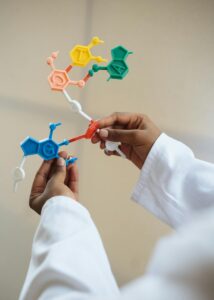The Element Between Chlorine and Potassium: Exploring Argon and Its Unique Properties

Introduction
The periodic table is an organized map of chemical elements, arranged based on their atomic structure and chemical behavior. Every element has a unique place in this table, and its position helps determine its properties and interactions with other elements. Today, we explore a fascinating question: what element lies between chlorine (Cl) and potassium (K)?
The answer is argon (Ar) — a noble gas with extraordinary properties that play vital roles in science, technology, industry, and even our daily lives. In this comprehensive guide, we’ll dive deep into argon’s discovery, chemical characteristics, uses, and significance in various fields.
1️⃣ Understanding the Periodic Table Placement
Position of Argon
-
Chlorine (Cl): Atomic Number 17
-
Argon (Ar): Atomic Number 18
-
Potassium (K): Atomic Number 19
Argon is nestled between chlorine and potassium, occupying Group 18 (Noble Gases) and Period 3 of the periodic table. Its unique position explains its special chemical behavior compared to its neighbors.
Why This Position Matters
-
Chlorine is a highly reactive halogen.
-
Potassium is an extremely reactive alkali metal.
-
Argon, in contrast, is a noble gas, almost entirely unreactive due to its full outer electron shell.
2️⃣ Discovery of Argon
How Argon Was Discovered
-
Discovered by: Sir William Ramsay and Lord Rayleigh
-
Year: 1894
-
Method: Isolated from atmospheric air after removing nitrogen, oxygen, carbon dioxide, and water vapor.
Their work earned Ramsay the Nobel Prize in Chemistry (1904), recognizing the discovery of noble gases.
Name Origin
The word argon comes from the Greek word “argos,” meaning inactive or lazy, perfectly describing its unreactive nature.
3️⃣ Chemical and Physical Properties of Argon
| Property | Details |
|---|---|
| Symbol | Ar |
| Atomic Number | 18 |
| Atomic Weight | 39.948 |
| Density | 1.784 g/L (at 0°C, 1 atm) |
| Boiling Point | -185.8°C |
| Melting Point | -189.3°C |
| State at Room Temperature | Gas |
| Color | Colorless |
| Odor | Odorless |
| Taste | Tasteless |
| Solubility in Water | Low |
Chemical Inertness
-
Argon has a full outer electron shell (eight electrons).
-
Extremely stable and unreactive.
-
Rarely forms compounds, though some exotic argon compounds have been created in laboratories.
4️⃣ Abundance and Sources
Natural Abundance
-
Earth’s Atmosphere: Approximately 0.934% by volume.
-
Universe: Found in small amounts in space, primarily created through stellar nucleosynthesis.
How It’s Extracted
-
Industrial extraction involves fractional distillation of liquid air.
-
This process separates argon from nitrogen and oxygen efficiently.
5️⃣ Uses of Argon in Everyday Life
1. Industrial Applications
-
Welding Shield Gas: Protects welds from oxidation and contamination.
-
Manufacturing of Titanium and Other Reactive Elements: Provides an inert atmosphere during processing.
-
Semiconductor Industry: Used in manufacturing computer chips and electronic components.
2. Lighting and Lasers
-
Neon Signs and Light Bulbs: Used in mixture with other gases to create distinctive lighting.
-
Argon Lasers: Applied in eye surgeries, dermatology, and scientific research.
3. Preservation
-
Used to preserve historical documents, artwork, and valuable materials by displacing oxygen and preventing oxidation.
4. Scientific Research
-
Cryogenics: Used in cryogenic applications for its inertness and low temperature.
-
Calorimetry: Used in particle physics experiments to detect rare particles.
6️⃣ Argon’s Role in Medicine
Eye Surgery (Photocoagulation)
-
Argon lasers are employed in treating retinal disorders, such as diabetic retinopathy.
-
They precisely seal leaking blood vessels without damaging surrounding tissue.
Cancer Treatments
-
In cryosurgery, argon gas freezes cancerous cells for non-invasive treatments.
7️⃣ Environmental Impact
Safe and Non-Toxic
-
Argon is non-toxic and poses no significant environmental risks.
-
Being inert, it doesn’t contribute to chemical pollution.
Occupational Safety
-
In enclosed spaces, argon can displace oxygen, leading to asphyxiation risks. Proper ventilation is crucial when used in confined environments.
8️⃣ Comparisons with Chlorine and Potassium
| Property | Chlorine (Cl) | Argon (Ar) | Potassium (K) |
|---|---|---|---|
| Group | 17 (Halogens) | 18 (Noble Gases) | 1 (Alkali Metals) |
| Reactivity | Highly reactive | Inert | Highly reactive |
| Natural State | Diatomic gas (Cl₂) | Monoatomic gas | Solid metal |
| Toxicity | Toxic | Non-toxic | Reactive with water |
| Usage | Disinfectants, chemicals | Inert gas applications | Fertilizers, batteries |
9️⃣ Myths and Misconceptions
1. Argon is Rare
-
Actually, argon is the third most abundant gas in Earth’s atmosphere after nitrogen and oxygen.
2. Argon Has No Use
-
Its inert properties make it extremely valuable in industries where reactivity would cause problems.
3. All Noble Gases Are Useless
-
Every noble gas, including argon, has unique industrial and scientific uses.
🔟 The Future of Argon
Emerging Technologies
-
Quantum Computing: Used in certain cooling and vacuum systems.
-
Energy Storage: Research is underway into its role in improving battery safety and longevity.
-
Space Exploration: Inert nature makes it ideal for sensitive equipment.
Growing Demand
-
As technology advances, the demand for argon continues to grow, particularly in microelectronics and medical technology.
Conclusion
While argon may sit quietly between chlorine and potassium on the periodic table, its importance is anything but small. From safeguarding welders to saving vision and preserving historical treasures, argon’s versatility highlights the often-overlooked value of noble gases.
As industries continue to innovate, this quiet, invisible gas will remain a cornerstone of technology, science, and manufacturing for years to come.
Also read:
Top 10 Breathtaking Places to Explore in Europe (2025 Travel Guide)
The Ultimate Guide to Budget Traveling in Europe (2025 Edition)
Top 10 AI Tools Revolutionizing Business in 2025
Top 10 Evergreen Health Tips for a Longer, Happier Life (2025 Guide)